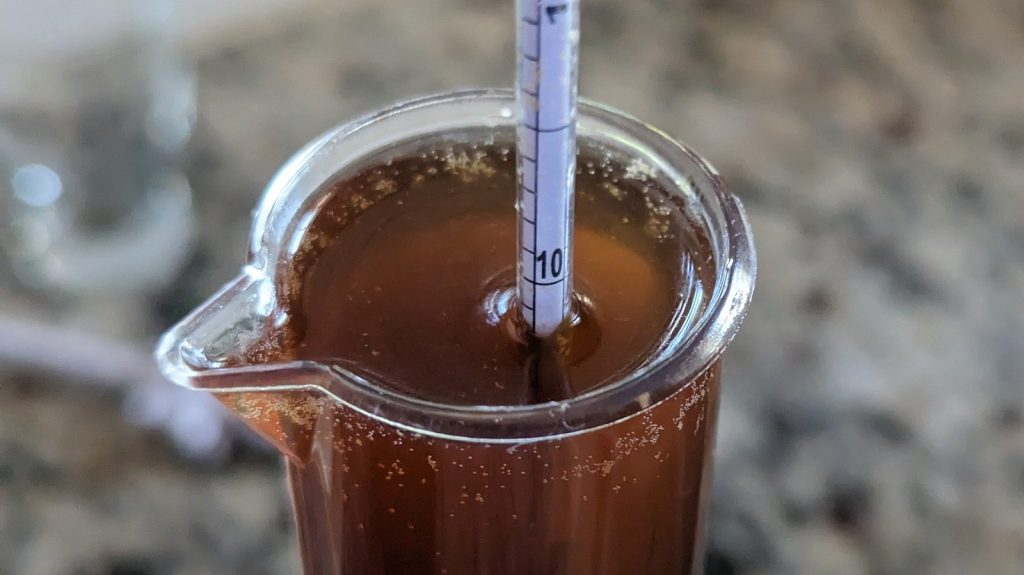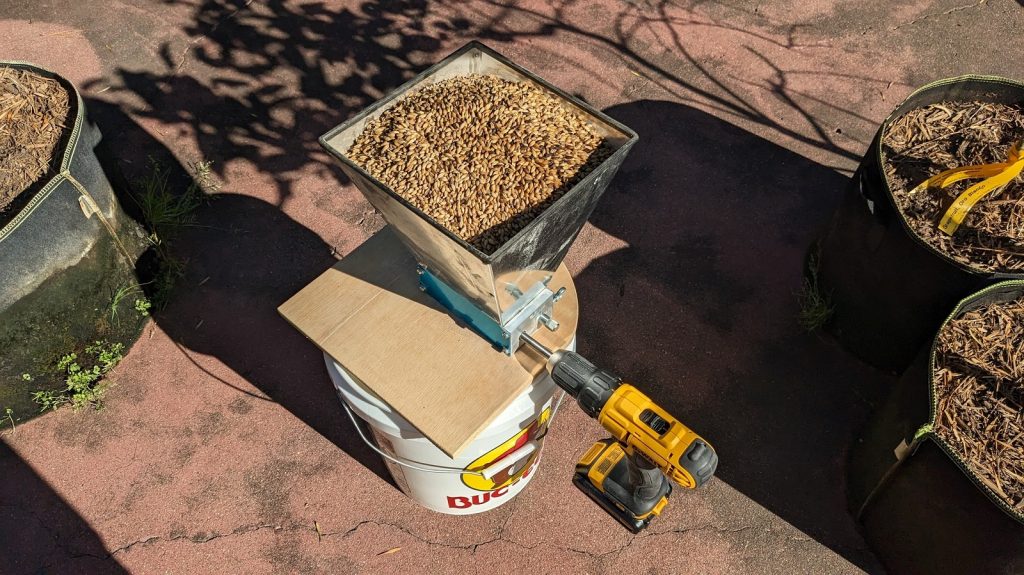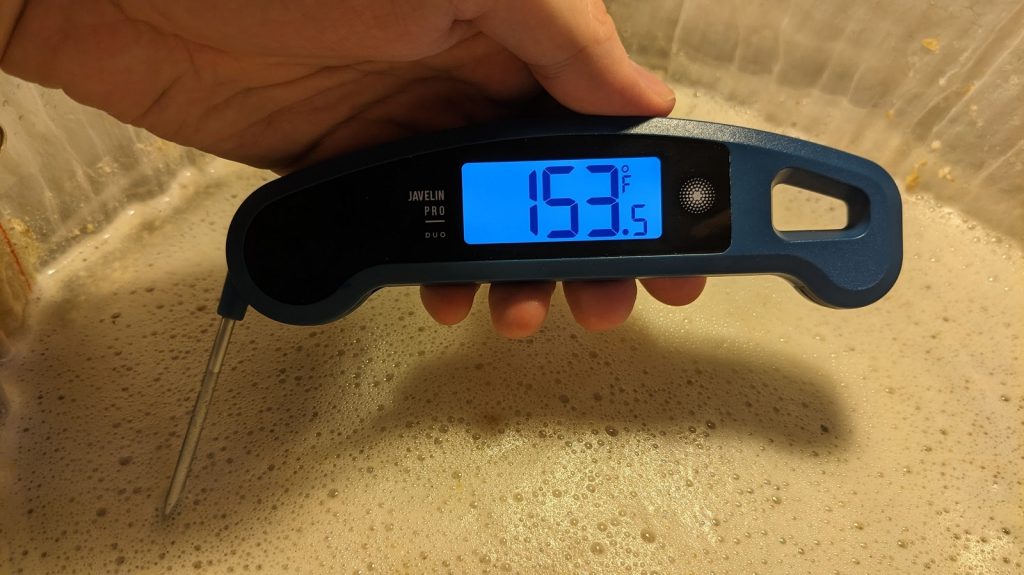Author: Alex Shanks-Abel
Often described as smelling and tasting of creamed corn or cooked vegetables, dimethyl sulfide (DMS) is chemical compound that’s generally viewed as being an off-flavor in beer. While it can be produced by certain bacteria in the case of a contamination, most DMS in beer is a function of malt, particularly the decomposition of S-methylmethionine (SMM), which is created during the germination stage of the malting process.
Given SMM’s sensitivity to heat, it readily volatilizes off during the malt kilning and roasting process; however, for the palest of malts, some SMM can remain and covert to DMS during the mash. For this reason, its recommended to boil wort made of primarily Pilsner malt for longer than the standard 60 minutes, as it allows more time for the DMS to evaporate off.
Like many who enjoy the evaluative side of brewing, I’ve had a number of beers I was confident possessed varying levels of DMS, usually due to a slight corn-like note I perceived. Understanding that my perception isn’t perfect, and wanting to learn more about off-flavors, I picked up a Siebel off-flavor kit and decided to use it for a series of xBmts, the first one being on DMS in a Dark Mild.
| PURPOSE |
To evaluate the differences between a Dark Mild dosed with DMS flavor standard and one that was not dosed.
| METHODS |
For this xBmt, I went with a simple Dark Mild recipe.
Dwarven
Recipe Details
| Batch Size | Boil Time | IBU | SRM | Est. OG | Est. FG | ABV |
|---|---|---|---|---|---|---|
| 5.5 gal | 60 min | 18.1 | 17.3 SRM | 1.039 | 1.011 | 3.68 % |
| Actuals | 1.039 | 1.011 | 3.68 % | |||
Fermentables
| Name | Amount | % |
|---|---|---|
| Golden Ale | 3 lbs | 41.38 |
| Maris Otter | 3 lbs | 41.38 |
| Caramalt Malt | 1 lbs | 13.79 |
| Chocolate Dark | 4 oz | 3.45 |
Hops
| Name | Amount | Time | Use | Form | Alpha % |
|---|---|---|---|---|---|
| Target | 10 g | 60 min | First Wort | Pellet | 10.3 |
| Celeia | 10 g | 15 min | Boil | Pellet | 3 |
Yeast
| Name | Lab | Attenuation | Temperature |
|---|---|---|---|
| Pub (A09) | Imperial Yeast | 74% | 64°F - 70°F |
Notes
| Water Profile: Ca 52 | Mg 0 | Na 0 | SO4 22 | Cl 76 |
Download
| Download this recipe's BeerXML file |
After collecting the water and adjusting it to my desired profile, I flipped the switch on my BrewZilla controller to get it heating up before I moved on to milling the grains.
Once the water was adequately heated, I incorporated the grains then checked to make sure it was at my target mash temperature.
While the mash was resting, I prepared the kettle hop additions.
Once the 60 minute mash was complete, I removed the grains then boiled the wort for 60 minutes before chilling it and taking a refractometer reading.

Next, I transferred the wort to a fermentation keg, and with the wort at my desired fermentation temperature of 68°F/20°C, I pitched a pouch of Imperial Yeast A09 Pub.
After a week, signs of activity were absent, so I took a hydrometer measurement FG had been reached.

At this point, I pressure transferred the finished beer to four 2 liter bottles, adding 0.5 mL of the DMS flavor standard to two of the bottles, resulting in the dosed samples possessing approximately 100 μg/L of DMS. According to Siebel and other sources, the detectable threshold for DMS is 25 to 50 μg/L.
The filled bottles then accompanied me to 2023 Homebrew Con where they were stored on ice before being served to tasters for evaluation.

| RESULTS |
Huge thanks to our friends from Yakima Valley Hops for allowing me to hunker down at their booth during Homebrew Con to collect data! A total of 47 people of varying levels of experience participated in this xBmt. Each participant was served 2 samples of beer dosed with DMS flavor standard and 1 sample of the non-dosed beer in different colored opaque cups then asked to identify the unique sample. While 22 tasters (p<0.05) would have had to accurately identify the unique sample in order to reach statistical significance, only 17 did (p=0.39), indicating participants in this xBmt were unable to reliably distinguish a Dark Mild dosed with DMS flavor standard from one that was not dosed with DMS.
My Impressions: Out of the 5 semi-blind triangle tests I attempted, I was able to identify the unique sample every time, but oddly, it wasn’t because of a notable creamed corn or cooked vegetable character. Rather, I perceived a very slight metallic twang in the beer dosed with DMS that wasn’t present in the non-dosed batch, but other than that, they were similar.
| DISCUSSION |
DMS is one of the more oft cited off-flavors by beer judges and evaluators, most of whom note perceiving it as a corn or canned vegetable characteristic. It’s possible this is due simply to the prevalence of beer with perceptible levels of DMS, which not only seems to indicate how easy it is to make beer with DMS in it, but also suggests people are generally rather sensitive to this off-flavor. Interestingly, tasters in this xBmt were unable to reliably distinguish a Dark Mild dosed with DMS flavor standard from one that was not dosed with DMS.
There’s little doubt that with increasingly higher dosage rates of DMS flavor standard, people would eventually be able to detect it; however, we specifically chose to dose the treated batch at twice the purportedly perceivable threshold due to how common this particular off-flavor is called out. One might argue these results are a function of inexperienced tasters who lack the proper knowledge of off-flavors, which may be true, but these participants were all attendees of Homebrew Con, so arguably more experienced and knowledgeable than the average beer drinker.
Prior to sampling these beers myself, I admittedly expected the version dosed with DMS to possess the unpleasant characteristics I’ve come to associate with it based on what I’ve learned from others. However, that wasn’t the case at all. While I happened to be able to consistently tell the beers apart, unlike most tasters, the only difference I perceived was a slight metallic thing in the DMS beer that wasn’t in the unadulterated batch. Coincidentally, results from a similar past xBmt using a different flavor standard in a commercial pale lager match these, suggesting to me that people just may not be as sensitive to DMS as they like to think.
If you have any thoughts about this xBmt, please do not hesitate to share in the comments section below!
Support Brülosophy In Style!
All designs are available in various colors and sizes on Amazon!
Follow Brülosophy on:
FACEBOOK | TWITTER | INSTAGRAM
If you enjoy this stuff and feel compelled to support Brulosophy.com, please check out the Support page for details on how you can very easily do so. Thanks!


















4 thoughts on “exBEERiment | Off-Flavor: Dimethyl Sulfide (DMS) In A Dark Mild”
Interesting. The last time I had Rolling Rock (maybe a decade ago) I wanted it because of its reputation as having DMS. All I tasted was metal. I’ve always wondered if that’s how I perceive DMS, or if there was something else metallic going on. (Of course this experiment doesn’t mean that I perceive DMS as metallic as I didn’t participate, just interesting that somebody does.)
It’s been a while since since I’ve had Rolling Rock. I’ll have to taste some and see if I get a similar metallic note. I’ve never detected any creamed corn from it, which led me to believe I was insensitive to DMS!
How timely and interesting about the metallic comments. I judged a brew recently that had both DMS and an odd unidentifiable metallic aroma and flavor. I think this possible perception link needs to be explored more for sure.
Anecdotally, I’ve only ever tasted this sharp metallic flavor in pale lagers. Pretty interesting!